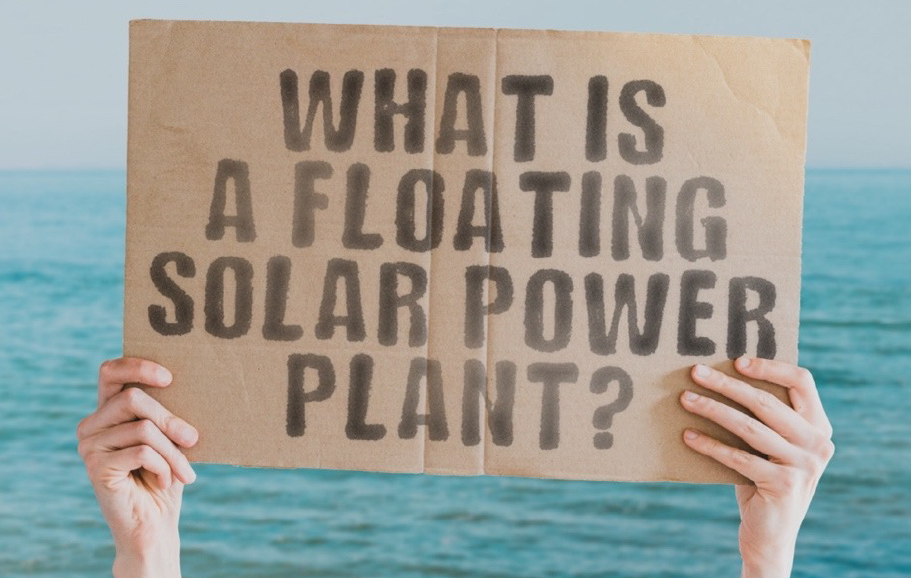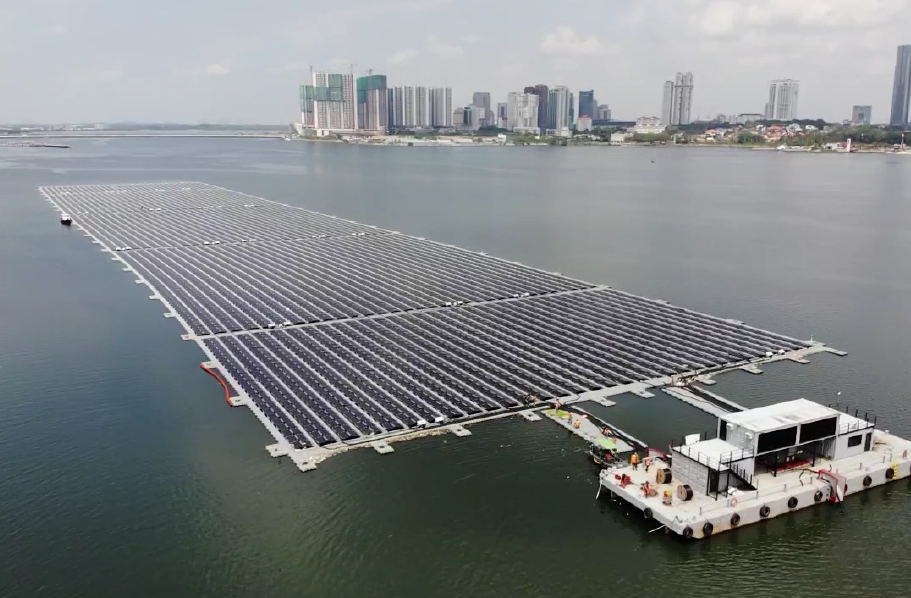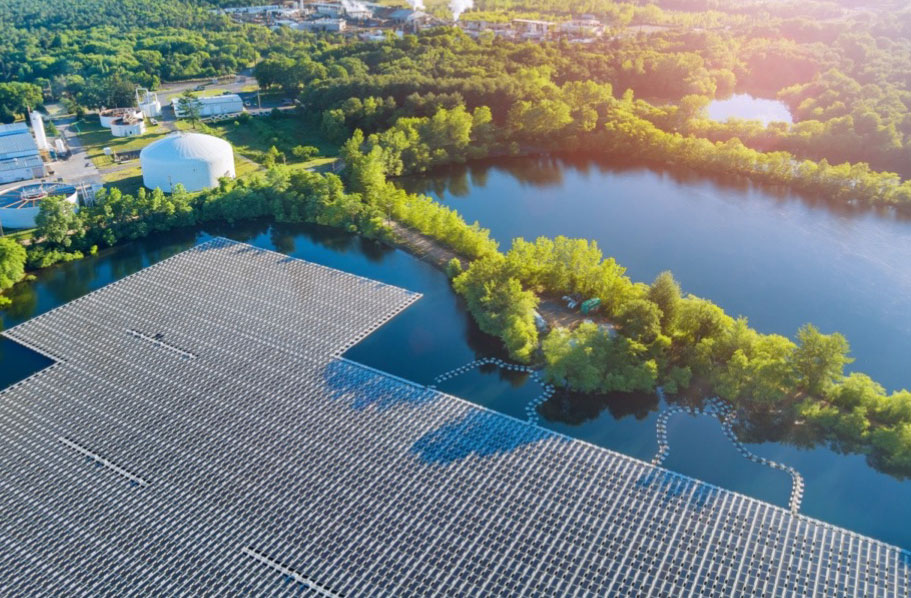
By Jeff Selamutu
September 21, 2021
As a clean, green, renewable source of energy, solar photovoltaic power is an essential pillar in efforts to address climate change. Besides ground-mounted and rooftop solar installations, this past year, floating solar energy systems have also been in the news.
Floating solar PV (FPV) systems are a relatively new concept. The first patent for this type of solar technology was registered in 2008. Since then, the floating solar panels have predominately been installed in countries like China, Japan as well as the U.K.
In March 2021, EDP Renewables (known as Sunseap then) announced the completion of one the world’s largest offshore photovoltaic (OFPV) system, with a capacity of 5 Megawatt-peak (MWp). Comprising 13,312 panels, 40 inverters and more than 30,000 floats, the energy generated yearly from this seawater-based installation can potentially offset an estimated 4,258 tons of carbon dioxide.

5MPW Offshore Floating PV system moored off Woodlands, in the Straits of Johor.
It should come as no surprise to learn that FPVs are more challenging and costly to build and operate than land-based ones. Yet floating solar capacity is growing quickly—from 70 megawatts of peak power (MWp) in 2015 to 1,300 in 2018. A report by global research firm Wood Mackenzie estimates that global demand for floating solar power is expected to grow by 22 percent year-over-year on average from 2019 through 2024.
So, what's driving this demand and the growing popularity of floating solar farms?
Space, or the Lack Thereof
One of the biggest advantages of FPVs is the solar panel installations don't require any land space. Most of these deployments can take unused space on bodies of water, such as hydroelectric dam reservoirs, wastewater treatment ponds, or drinking water reservoirs. This will allow the landowners to make use of an area that wouldn't otherwise be used, and rather than getting a solar panel installation in sunny land that could potentially serve another purpose down the line. In addition, installing solar panels out on open water reduces the need for tree removal and forest clearing which is a practice that is used in the case of solar of the larger solar panel installations.

Performance & Conservation
Bodies of water have a cooling effect, and this can improve the performance of solar panels by anywhere from 5 to 10 percent, depending on which study you're looking at. Over time, this translates into significant cost savings. Solar panels perform better when they are cooler, meaning that a floating solar array will outperform a land-based solar array of comparable size owing to the cooling effects of its location on the water.
Besides the water having a cooling effect on the solar-powered systems, it works the other way as well. The floating solar panel installation provides shade to the body of water and reduces the evaporation from these ponds, reservoirs, and the lakes. This is a particularly useful environmental benefit of solar energy in areas that are more susceptible to droughts, as water loss due to evaporation and can add up over time and contribute to a shortage.
The shade that the floating solar panels produce can help reduce the presence of algae that blooms in the freshwater. The algae can be a little dangerous for human health if they occur in a source of the drinking water, and it can also lead to the death of plants and animals that live in the water.
Infrastructure, Resources & Costs
Floating solar often requires less in terms of both labor and materials than a land-based project of similar size. Additionally, less maintenance/cleaning may be required as floating panels are generally located away from potential debris sources.
FPV installations are much quicker to build than fossil-fuelled power stations and can be ready in a matter of months, while coal, gas, hydro generators and nuclear plants can take several years to construct. As more countries in Asia-Pacific commit to competitive solar and overall renewable energy targets, FPV will be key to meeting these goals.
FPVs By The Numbers
- Japan currently has the largest number of completed FPV projects of any country globally the projects are typically smaller and the cumulative capacity is less than that of other countries in Asia-Pacific.
- The biggest operational floating solar power plant in 2021 is in China and along with India, account for six of the world's ten biggest floating solar projects in various stages of development.
- South Korea accounts for two, including what is currently the biggest FPV, the 2.1 GWp Semangeum floating solar energy project.
These are exciting times indeed in the clean energy space, and the best part is that consumers stand to benefit as the sector grows and expands.